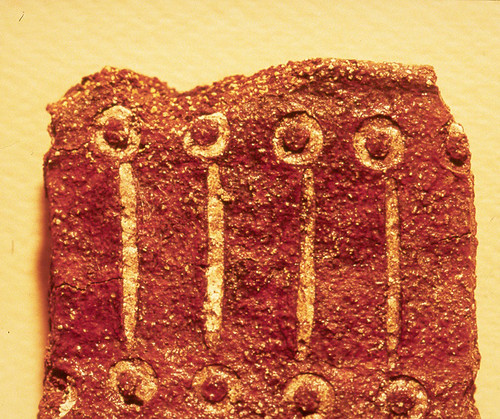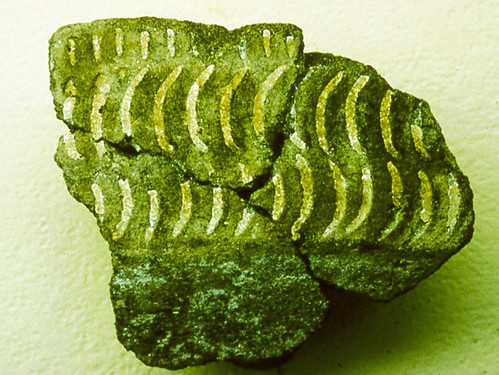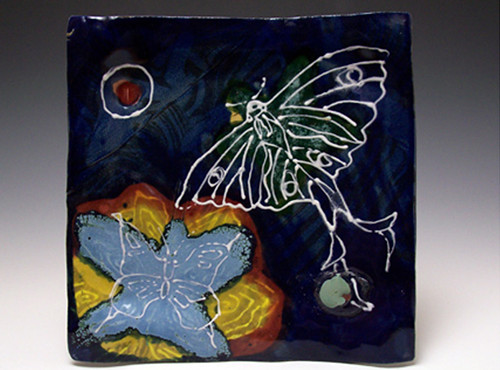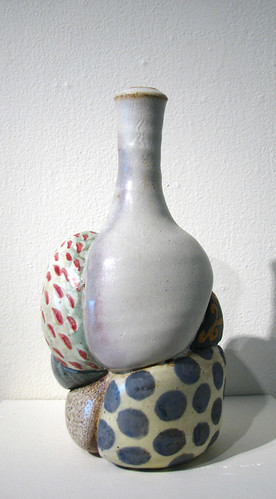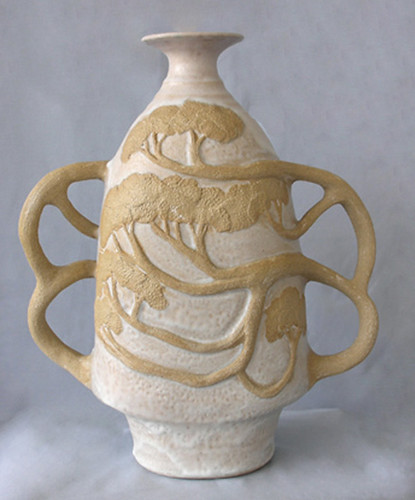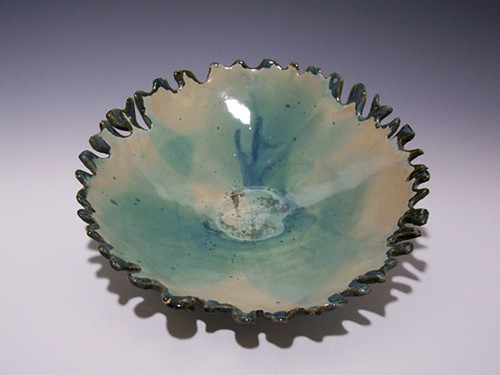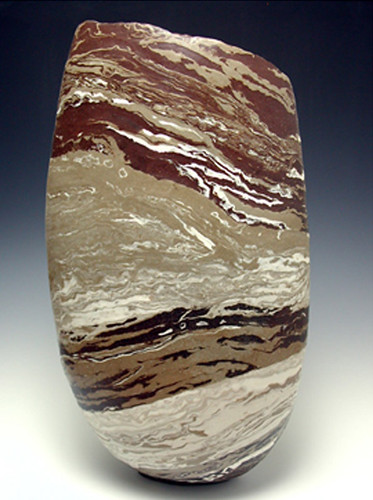Ceramics
Ancient Chamorro Pottery
Marianas archaeological studies indicate that, as a craft, an indigenous form of ceramics dates back to more than 3,000 years. Ancient Chamorros produced a variety of ceramic containers for practical domestic purposes such as serving and storing food and water, and for cooking. Chamorros used natural resources, specifically red clay, found in abundance on the island to make the essential containers. Potsherds, broken pieces of pottery found at archaeological sites, show similar ceramic designs were used amongst the peoples of the Mariana Islands, the Philippines and Southeast Asia.
Craft and design
Archaeological digs have unearthed numerous sherds that serve as testimony of the Chamorros’ ceramic production. The findings show two distinct categories of ceramics on Guam: Pre-Latte Period (1 AD-800 AD) and Latte Period (800 AD – 1521 AD). There are stylistic characteristics and formulaic variations that identify the two periods as distinct from one another. Pre-historic pottery from the Mariana Islands took on a basic form, but lime (afok) impressions illustrate a creativity of design and patterns. A potter’s wheel was not used on Guam. Rather, the ceramic pieces were hand built using the coiling technique, then smoothed with a paddle and typically did not include handles. Surface ornamentation was applied with fingers, coconut husks, and impression tools. The clay pieces were most likely fired using the open fire method in which the vessels were placed in the flames to harden.
Pre-Latte ceramics consisted of red clay mixed or tempered with white coral sand and water. The vessels from this period were often wide-mouthed, shallow with a flattened bottom and, most likely, used to serve food. Pre-Latte pottery included both decorated and undecorated pieces. The vessels that are not decorated on the exterior are referred to as Marianas Red, due to the color of the clay. The decorated pottery included incised designs along the surface of the pots which were then filled with afok (lime). This category of Pre-Latte ceramics is referred to as Lime-filled Impressed Ware. The most common motifs consist of wave patterns, circles, rectilinear lines, punctuate infilling, lines, half circles, and chevrons.
During the Latte Period, red clay was mixed with dark volcanic sand and water. This provided a different profile and allows archaeologists to identify the time period simply by looking at the colors in a cross section of the potsherd. Ceramic pieces from this time period were more simply decorated with surface textures along the rims and were smaller than the Pre-Latte ware. Additionally, the bottoms were rounded or cone-shaped with smaller mouths, suggesting that they were used for cooking.
Potsherds have been found throughout the island, with the characteristic red interior and a black exterior, indicating that they were set above a fire and used for cooking purposes. During the late seventeenth century, pottery production ceased after the Spanish-Chamorro Wars. Imported ceramics were then used to store, cook, and serve food.
Contemporary ceramics on Guam
Since the mid-1960s, the University of Guam has offered courses in the field of sculpture/ceramics. Art professors with a specialization in this area who have taught at the University of Guam include Walter Hannula (1960s), David Hall (1970s), Dale Collard (1970s), and Kathleen (Thielen) Montvel-Cohen (1976-late 1980s). Since 1989 Lewis Rifkowitz, a professor with the UOG Fine Arts Department, has provided instruction at the institution and continues to teach innovative and creative approaches to the production of ceramic works.
Contemporary ceramics production on Guam is fairly specialized and features artists who are more interested in producing works of art with a focus on aesthetics and form in contrast to the ancient Charmorros who produced more functional pieces. There is an abundance of student and faculty interest in the art form, but they are faced with a lack of working resources, most importantly of which are kilns. A lack of financial support inhibits artists’ abilities to nurture their craft by obtaining kilns. Currently, there are only a few kilns on Guam, but there are countless variations of styles of pottery paralleling the ethnic diversity of the artists. The potters create for both function and design with a sensitivity to color and form. Each piece contains a slight twist of hand and a play on color.
Although Guam’s ceramic artists have gone abroad while others remain, their work is well documented from past exhibitions of the UOG Isla Center for the Arts, including pieces from the “Art of the Pacific Rim: Works by Selected Artists from 2006 and the 2007 Art Faculty Biennial Exhibition.”
By Velma Yamashita and Nathalie Pereda
For further reading
Cunningham, Lawrence J. Ancient Chamorro Society. Honolulu: Bess Press, 1992.
Dickinson, William R., Brian M. Butler, Darlene R. Moore, and Marilyn Swift. “Geologic Sources and Geographic Distribution of Sand Tempers in Prehistoric Potsherds from the Mariana Islands.” Geoarchaeology: An International Journal 16, no. 8 (2001): 827-854.
Feldman, Jerome, and Donald H. Rubinstein. The Art of Micronesia: The University of Hawaii Art Gallery. Honolulu: University of Hawai`i Department of Art and Partners, 1986.
Flores, Judy. “Art and Identity in the Mariana Islands: Issues of Reconstructing an Ancient Past.” PhD thesis, University of East Anglia, 1999.
Hunter-Anderson, Rosalind L., Gillian B. Thompson, and Darlene R. Moore. “Rice As a Prehistoric Valuable in the Mariana Islands, Micronesia.” Asian Perspectives 34, no. 1 (Spring 1995): 69-89.
Kihleng, Kimberlee S., and Nancy P. Pacheco, eds. Art and Culture of Micronesian Women. Mangilao: Isla Center for the Arts and Women & Gender Studies Program, University of Guam, 2000.
Moore, Darlene R. “Measuring Change in Marianas Pottery: The Sequence of Pottery Production at Tarague, Guam.” MA thesis, University of Guam, 1983.
Schuetz, Mardith K. The Archaeology of the Governor’s Palace: Plaza de Espana, Agana, Guam. Mangilao: University of Guam Richard F. Taitano Micronesian Area Research Center, 2007.
University of Guam. “Isla Center for the Arts, University of Guam.” 11 February 2023.

